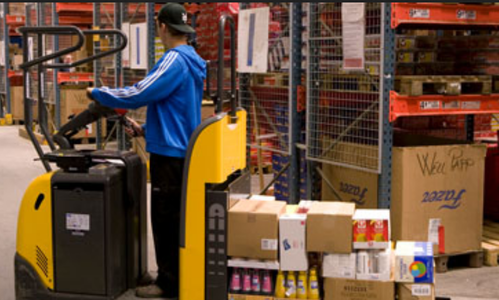Data Feeder – Warehouse (1 years diploma)
Data Feeder – Warehouse click here
Brief Job Description
Data Feeder Warehouse, in the Logistics industry is also known as system executive, data analyst, data
entry operator and system analyst. Individuals in this role need electronically process all orders and
provide database management support for warehouse operations. Responsibilities include logging orders, maintaining reports, generating pick lists and schedules.
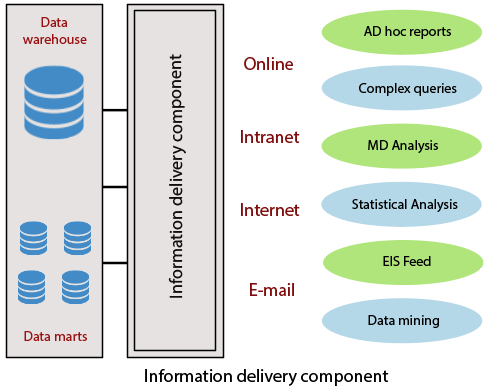
Personal Attributes
This job requires the individual to concentrate on the job at hand and complete it without any errors. The
individual should also be skilled in performing numerous computer operations and have a keen eye for
accuracy and spotting errors.
Experience
10th Class
OR
8th Class (+ 2 years of ITI)
OR
8th Class (+ 1 year of ITI ) with 1 Year of
experience relevant experience
OR
Certificate-NSQF (Loader/ Unloader – level 2)
with 1 Year of experience relevant
experience
Minimum Level of Education for Training in
School
Pre-Requisite License or Training Must be trained in operating a computer and
use excel
Minimum Job Entry Age 18 Years
Last Reviewed On NA
Next Review Date NA
NSQC Approval Date
Version 3.0
Prepare for Operations
Description
This unit is about preparing at the computer terminal for activities that need to be carried out during a
shift
Elements and Performance Criteria
Set up computer for operations
To be competent, the user/individual on the job must be able to:
PC1. adhere to time limits given by warehouse manager
PC2. power up computer terminal and log in using company credentials
PC3. check for the updated entries on the warehouse management system(WMS)/Enterprise
Resource Planning(ERP)/GCIS (Global Inventory Control System) homepage before the start
of daily operations
PC4. ensure readiness of the computer for the start of operations
PC5. complete any software updates required before start of operations
Check for new input and update database
To be competent, the user/individual on the job must be able to:
PC6. receive any new data such as client software syncs, new client details from DEO incharge/client liason
PC7. update new clients onto the computer/information system
PC8. ensure all warehouse facilities are connected on the server for seamless inventory
assessments/ order checks
PC9. verify all existing client’s details are available on the information system
Print all requisite lists, labels and forms
To be competent, the user/individual on the job must be able to:
PC10. print pick lists based on orders, labels for inbound/outbound goods and anysign off forms
that may be required for maintaining records
PC11. print any contact details available for incoming goods transporters/delivery boys
PC12. contact assigned supervisors to hand over documents and discuss timelines
Safety, Security and Administrative
To be competent, the user/individual on the job must be able to:
PC13. comply with safety regulations and procedures in case of fire hazards, biohazards, etc
PC14. follow organization procedures with respect to security
PC15. adhere to security regulations of the company
PC16. maintani clean worktable area
Knowledge and Understanding (KU)
The individual on the job needs to know and understand
KU1. types of documentation in organization e.g. daily maintenance checklist and importance of
the same
KU2. risk and impact of not following defined work, safety and security procedures
KU3. records and log books to be maintained and the importance of the same
KU4. security procedures to be followed
KU5. stock recording procedures followed by organization
KU6. escalation matrix for reporting identified problems
KU7. chain of command for reporting problems and status of delivery
KU8. value of items handled and implications of damage/loss of the same
KU9. rules and regulations at pick-up site (warehouse, factory, office etc.)
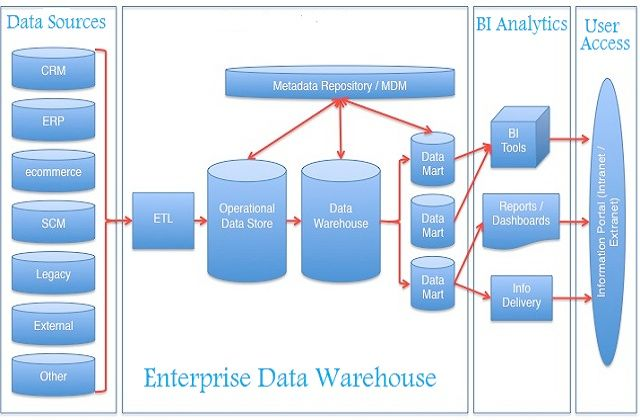
KU10. knowledge of various clients and their supporting software/database management systems
KU11. understanding of assigned responsibilities of all shopfloor employees
KU12. implications of poor performance such as delayed pick-up, improper documentation and high
error rate
KU13. escalation matrix for technical issues for ERP/GICS/WMS (trouble shoot, debug and optimum
utilization)
KU14. understanding of the entire chain of activities at the warehouse
KU15. knowledge of various clients and their supporting software/database management systems
KU16. nature of the products stored and the variances in their characteristics
KU17. application of stock recording, inventory management procedures such as FIFO etc
KU18. detailed understanding of ERP software and its applications
KU19. key understanding of all stock recording procedures and methods
KU20. understanding of the relevant it technicians to be reached out to for various technical issues
KU21. understanding of common technical problems and solutions for the same
KU22. good understanding of excel software
KU23. knowledge of controls and processes for operating computer terminal
KU24. basic computer skills to operate and perform minor fixes
KU25. knowledge of processes and differences in processes across clients/products
KU26. technical understanding of the firm’s planning and procurement processes
Generic Skills (GS)
User/individual on the job needs to know how to:
GS1. ability to make note of instructions for the supervisor/shopfloor staff
GS2. ability to develop operating procedures, improvements and create documents for internal
understanding/use
GS3. apply for insurance coverage etc. if required
GS4. good reading skills to understand computer instructions, operating procedures
GS5. read and understand orders and instructions
GS6. read and understand documents required for operational activities
GS7. communicate with supervisors and peers
GS8. provide advice and guidance to juniors and peers
GS9. communicate effectively with client representatives/warehouse staff
GS10. maintain integrity with respect to company property and time
GS11. communicate with people in a form and manner and using language that is open and
respectful
GS12. resolve any difficulties in relationships with colleagues or get help from an appropriate
person, in a way that preserves goodwill and trust
GS13. take responsibility for completing ones own work assignment
GS14. take initiative to enhance/learn skills in ones area of work
GS15. learn from experience in a range of settings and scenarios
GS16. reflect and act upon ones learning
GS17. introduce innovations or new practices to increase efficiency
GS18. develop personal goals in alignment with organization and work towards achieving set
targets.
GS19. avoid absenteeism
GS20. act objectively , rather than impulsively or emotionally when faced with difficult/stressful or
emotional situations
GS21. work in a disciplined environment
GS22. maintain punctuality
GS23. prioritize and execute tasks within the scheduled time limits
GS24. organize work schedule to ensure all orders are met within the requisite timelines
GS25. ability to balance multiple tasks and complete them within timelines
GS26. manage multiple orders, clients with efficient order systems
GS27. cope with technical errors and system breakdown in case of emergencies through manual
documentation
GS28. ability to bundle orders in the most efficient manner possible
GS29. be a team player and achieve joint goals
GS30. concentrate on task at hand and complete it without errors
GS31. check for damage computer and terminal and ensure it is in working condition
GS32. conduct maintenance tasks e.g. software updates etc
GS33. escalate severe issues to data entry supervisor
To Carry Out Documentation and Quality Control
Description
This unit is about carrying out documentation and quality control
Elements and Performance Criteria
Complete all requisite documentation
To be competent, the user/individual on the job must be able to:
PC1. ensure appropriate insurance coverage for all transports and apply for new coverage if
required
PC2. obtain proof of delivery, generate print-outs for all transports and maintain logs and files of
said documents.
PC3. transcribe information from customers’ bills of lading into cargo management system.
PC4. update the system to include the day’s transactional milestones
PC5. perform day-to-day administrative documentation such as maintaining information files and
processing paperwork
PC6. generate daily, monthly and annual reports and MIS trackers based on performance
Perform check on the shop floor if required
To be competent, the user/individual on the job must be able to:
PC7. monitor the quality, quantity, cost and efficiency of the movement and storage of goods
PC8. coordinate with inspectors/ spot checks/counts by supervisors in situations where any
discrepancies have been spotted (missing goods, unreported damages etc.)
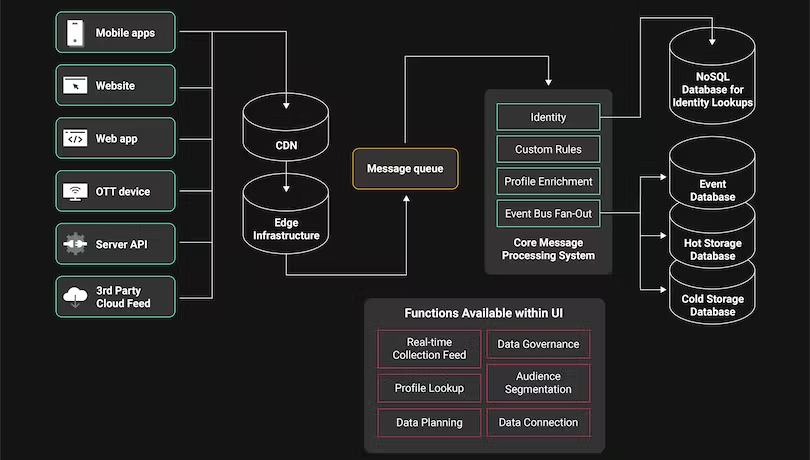
PC9. in case of issue with documentation on the shopfloor, visit specific area and perform a
physical check to reconcile data with documentation/system
Safety, Security and Administrative
To be competent, the user/individual on the job must be able to:
PC10. comply with safety regulations and procedures in case of fire hazards, bio-hazards, etc.
PC11. adhere to security regulations of the company
PC12. maintain clean work table area
PC13. ensure all safety gear is worn on any visits to the shop floor
Knowledge and Understanding (KU)
The individual on the job needs to know and understand:
KU1. types of documentation in organization e.g. daily maintenance checklist and importance of
the same
KU2. risk and impact of not following defined work, safety and security procedures
KU3. records and log books to be maintained and the importance of the same
KU4. security procedures to be followed
KU5. stock recording procedures followed by organization
KU6. escalation matrix for reporting identified problems
KU7. chain of command for reporting problems and status of delivery
KU8. value of items handled and implications of damage/loss of the same
KU9. rules and regulations at pick-up site (warehouse, factory, office etc.)
KU10. knowledge of various clients and their supporting software/database management systems
KU11. understanding of assigned responsibilities of all shopfloor employees
KU12. implications of poor performance such as delayed pick-up, improper documentation and high
error rate
KU13. escalation matrix for technical issues for erp/gics/wms (trouble shoot, debug and optimum
utilization)
KU14. understanding of the entire chain of activities at the warehouse
KU15. knowledge of various clients and their supporting software/database management systems
KU16. nature of the products stored and the variances in their characteristics
KU17. application of stock recording, inventory management procedures such as FIFO etc
KU18. detailed understanding of ERP software and its applications
KU19. key understanding of all stock recording procedures and methods
KU20. understanding of the relevant it technicians to be reached out to for various technical issues
KU21. understanding of common technical problems and solutions for the same
KU22. good understanding of excel software
KU23. knowledge of controls and processes for operating computer terminal
KU24. basic computer skills to operate and perform minor fixes
KU25. knowledge of processes and differences in processes across clients/products
KU26. technical understanding of the firm’s planning and procurement processes
Generic Skills (GS)
User/individual on the job needs to know how to:
GS1. ability to make note of instructions for the supervisor/shop floor staff
GS2. ability to develop operating procedures, improvements and create documents for internal
understanding/use
GS3. apply for insurance coverage etc. if required
GS4. good reading skills to understand computer instructions, operating procedures
GS5. read and understand orders and instructions
GS6. read and understand documents required for operational activities
GS7. communicate with supervisors and peers
GS8. provide advice and guidance to juniors and peers
GS9. communicate effectively with client representatives/warehouse staff
GS10. maintain integrity with respect to company property and time
GS11. communicate with people in a form and manner and using language that is open and
respectful
GS12. resolve any difficulties in relationships with colleagues or get help from an appropriate
person, in a way that preserves goodwill and trust
GS13. take responsibility for completing ones own work assignment
GS14. take initiative to enhance/learn skills in ones area of work
GS15. learn from experience in a range of settings and scenarios
GS16. reflect and act upon ones learning
GS17. introduce innovations or new practices to increase efficiency
GS18. develop personal goals in alignment with organization and work towards achieving set
targets.
GS19. avoid absenteeism
GS20. act objectively , rather than impulsively or emotionally when faced with difficult/stressful or
emotional situations
GS21. work in a disciplined environment
GS22. maintain punctuality
GS23. prioritize and execute tasks within the scheduled time limits
GS24. organize work schedule to ensure all orders are met within the requisite timelines
GS25. ability to balance multiple tasks and complete them within timelines
GS26. manage multiple orders, clients with efficient order systems
GS27. cope with technical errors and system breakdown in case of emergencies through manual
documentation

GS28. ability to bundle orders in the most efficient manner possible
GS29. be a team player and achieve joint goals
GS30. concentrate on task at hand and complete it without errors
GS31. check for damage computer and terminal and ensure it is in working condition
GS32. conduct maintenance tasks e.g. software updates etc.
GS33. escalate severe issues to data entry supervisor
Undertake data entry services
Description
This unit is responsible for performing data entry work using a personal computer and appropriate
software, entering, updating, researching, verifying and/or retrieving data into/from various systems, and
ensuring the accuracy and confidentiality of information recorded..
Elements and Performance Criteria
To be competent, the user/individual on the job must be able to:
PC1. obtain sufficient information from the customer /client to understand the need and perform
initial task
PC2. assist the customer in providing right information to be entered
PC3. provide the customer with a reasonable estimate time of entering data
PC4. prioritize service requests according to organizational guidelines
PC5. refer the problem to a competent technical support team if it cannot be resolved by the
operator
PC6. record and perform the service request accurately as per organizational processes and
policies
PC7. transcribes, enters, and verifies data from a variety of source material including financial,
personnel, police and other records or reports
PC8. receives source documents from various departments, public, agencies, etc. and verifies
accuracy of material, prior to input
PC9. transcribes selected data into a computer and scans source documents in accordance with
specific program instructions
PC10. compares transcribed data, as displayed on a visual screen, document and corrects any
errors with the source
PC11. obtain help or advice from specialist if the problem is outside his/her area of competence or
experience
PC12. determines the cause of error message while entering data and makes appropriate
corrections
PC13. maintains files of source documents or other information relative to data entered
PC14. performs various related functions to insure that the computer is maintained in a neat and
orderly manner
PC15. assists in (or performs) the filing and storage of security and back up data files
PC16. may perform various back-up or relief clerical duties as needed (i.e., switchboard,
receptionist, fingerprinting, etc. )
PC17. monitor the problem and keep the customer informed about progress or any delays in the
process
Knowledge and Understanding (KU)
The individual on the job needs to know and understand:
KU1. relevant legislation, standards, policies, and procedures followed in the company
KU2. how to engage with both internal and external specialists for support in order to perform the
desired task
KU3. data entry procedures, tools, and techniques
KU4. potential helpdesk customers and their typical requirements
KU5. role and importance of the data entry operator in supporting business operations
KU6. evaluate the adequacy of existing helpdesk feedback systems and suggest improvements
KU7. basic understanding of computer and its terminology
KU8. different software needed for report writing including MS office suit or opensource office
KU9. basic and advance pc workstation configuration, maintenance, networking aswell as trouble
shooting
KU10. good knowledge of the operation and use of a standard alphanumeric keyboard
KU11. how to compile simple reports from data entered and ability to make comparisons between
them through use of various database managementsoftwares
KU12. how to make error free data entry with the help of various software, devices, equipment
KU13. typical problems raised by customers and their solutions, including workaround
(alternate/situational) solutions
KU14. typical response times and service times for problems
KU15. the importance of documenting, classifying, prioritizing service requests,crowd management
and others.
KU16. helpdesk systems, policies, and procedures
KU17. maintain a knowledge-base of the known problems
Generic Skills (GS)
User/individual on the job needs to know how to:
GS1. document call logs, reports, task lists, and schedules with co-workers
GS2. prepare status and progress reports
GS3. write in at least one language
GS4. read about the software and the documents, products and services with reference to the
organization.
GS5. keep abreast with the latest knowledge by reading newspaper , pamphlets, and product
information sheets
GS6. read comments, suggestions, and responses to frequently asked questions (FAQs) posted on
the helpdesk portal
GS7. discuss task lists, schedules, and work-loads with co-workers
GS8. question customers appropriately in order to understand the nature of theproblem and make
a diagnosis
GS9. give clear instructions to customers and perform the task
GS10. keep customers informed about progress
GS11. avoid using jargon, slang or acronyms when communicating with a customer, unless it is
required

GS12. follow rule-based decision-making processes
GS13. identify anomalies in data
GS14. make a decision on a suitable course of action or response
GS15. plan and organize your work to achieve targets and deadlines
GS16. work effectively in a customer facing environment
GS17. carry out rule-based transactions in line with customer-specific guidelines/procedures/rules
and service level agreements
GS18. check that your own and/or your peers work meets customer requirements
GS19. apply problem-solving approaches in different situations
GS20. refer anomalies to the supervisor
GS21. seek clarification on problems from others
GS22. analyze data and activities
GS23. configure data and disseminate relevant information to others
GS24. pass on relevant information to others
GS25. provide opinions on work in a detailed and constructive way
GS26. apply balance judgments to different situations
GS27. apply good attention to detail
GS28. check your work is complete and free from errors
GS29. get your work checked by others
GS30. contribute to the quality of team working
GS31. work independently in a team environment
GS32. work independently and collaboratively
GS33. source and use coding standards, ticketing tools and utilities/tools
GS34. use information technology effectively to input and/or extract data accurately
GS35. identify and refer anomalies in data
GS36. store and retrieve information
GS37. agree objectives and work requirements
GS38. keep up to date with changes, procedures and practices in your field of expertise
Manage your work to meet requirements
Description
This unit is about planning and organizing your work in order to complete it to the required standards on
time.
Elements and Performance Criteria
To be competent, the user/individual on the job must be able to:
PC1. establish and agree your work requirements with appropriate people
PC2. keep your immediate work area clean and tidy
PC3. utilize your time effectively
PC4. use resources correctly and efficiently
PC5. treat confidential information correctly
PC6. work in line with your organizations policies and procedures
PC7. work within the limits of your job role
PC8. obtain guidance from appropriate people, where necessary
PC9. ensure your work meets the agreed requirements
Knowledge and Understanding (KU)
The individual on the job needs to know and understand:
KU1. your organizations policies, procedures and priorities for your area of work and your role and
responsibilities in carrying out your work
KU2. limits of your responsibilities and when to involve others
KU3. your specific work requirements and who these must be agreed with
KU4. the importance of having a tidy work area and how to do this
KU5. how to prioritize your workload according to urgency and importance and the benefits of this
KU6. your organizations policies and procedures for dealing with confidential information and the
importance of complying with these
KU7. the purpose of keeping others updated with the progress of your work
KU8. who to obtain guidance from and the typical circumstances when this may be required
KU9. the purpose and value of being flexible and adapting work plans to reflect change
KU10. the importance of completing work accurately and how to do this
KU11. appropriate timescales for completing your work and the implications of not meeting these
for you and the organization
KU12. resources needed for your work and how to obtain and use these
Generic Skills (GS)
User/individual on the job needs to know how to:
S1. complete accurate work with attention to detail
GS2. read instructions, guidelines, procedures, rules and service level agreements
GS3. ask for clarification and advice from line managers
GS4. communicate orally with colleagues
GS5. make decisions on suitable courses
GS6. plan and organize your work to achieve targets and deadlines
GS7. agree objectives and work requirements
GS8. deliver consistent and reliable service to customers
GS9. check your own work meets customer requirements
GS10. refer anomalies to the line manager
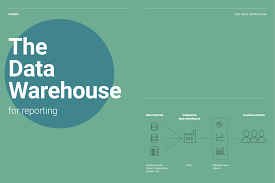
GS11. seek clarification on problems from others
GS12. provide relevant information to others
GS13. analyze needs, requirements and dependencies in order to meet your work requirements
GS14. apply judgments to different situations
GS15. check your work is complete and free from errors
GS16. get your work checked by peers
GS17. work effectively in a team environment
GS18. use information technology effectively, to input and/or extract data accurately
GS19. identify and refer anomalies in data
GS20. store and retrieve information
GS21. keep up to date with changes, procedures and practices in your role



